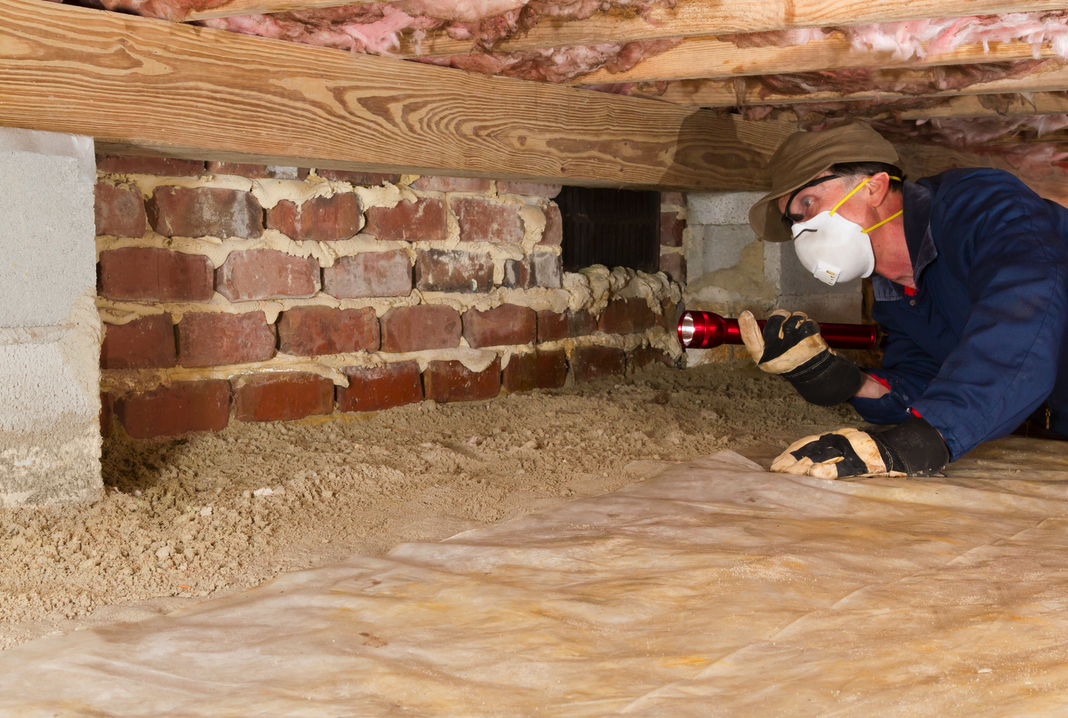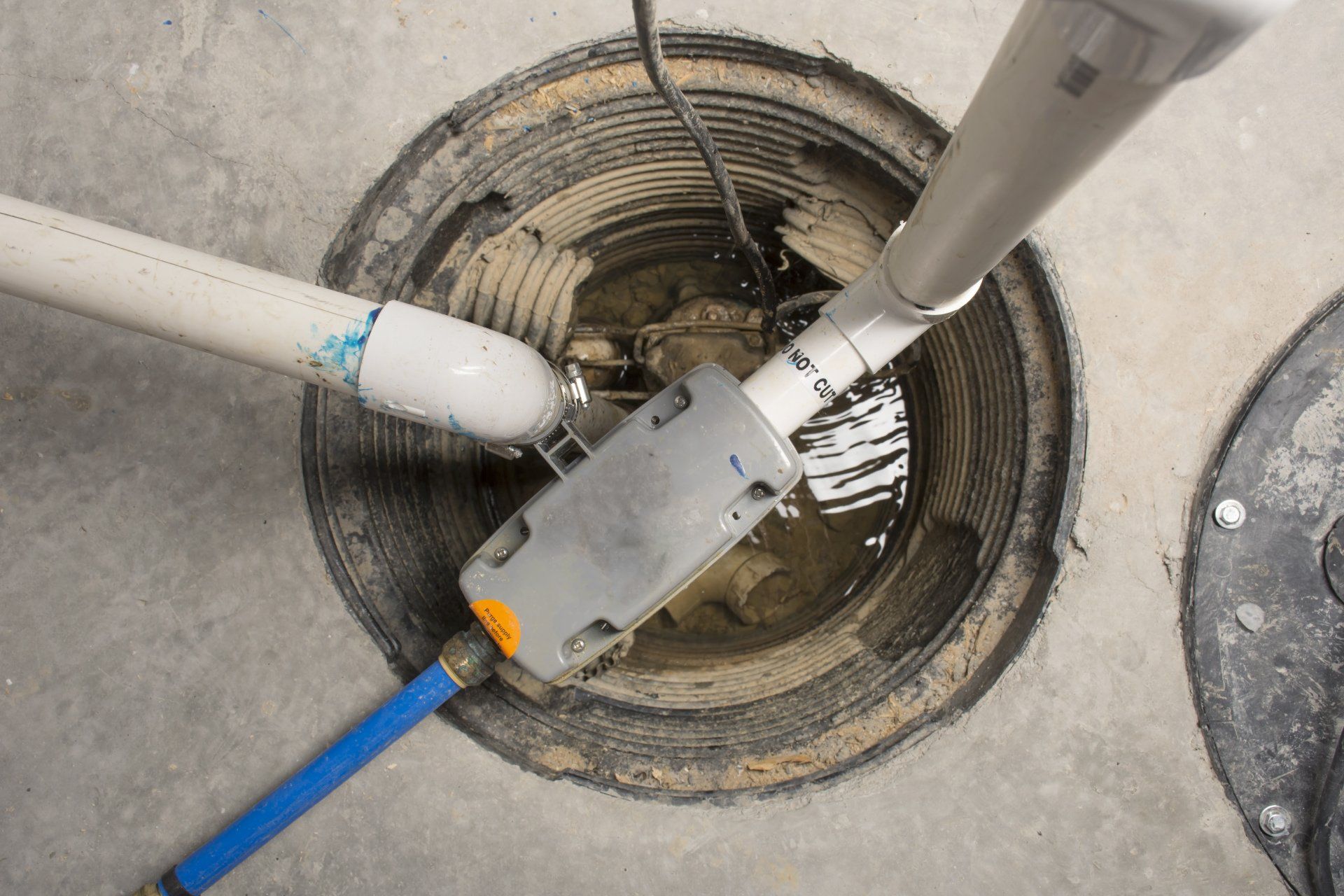How to Prevent Crawl Space Moisture: 7 Essential Tips for a Dry Home
Not all crawlspaces should have moisture.

Moisture in the crawl space is very common in Kansas City, where it's humid all year
round due to snow, rain, or ice. However, homeowners should beware when the issues with a crawlspace arise, including mold, mildew, musty smells, and obvious signs of water.
According to experts, around 50% to 70% moisture levels are safe for crawl spaces,
and more than that that range can pose a risk to the building's structures. So, homeowners often have questions about how to prevent crawl space moisture, and this article is here to help provide insight into How to Prevent Crawl Space Moisture: 7 Essential Tips for a Dry Home.
Some tips that can be done to your home quickly and easily include:
- You can install a dehumidifying system paired with a vapor barrier.
- Install a sump pump to route away excess water.
- Regularly cleaning gutters can also help with this issue.
Continue reading to learn many more effective processes.
7 Essential Tips to Keep Your Crawl Space Dry
We have outlined 7 quick and easy methods for getting rid of crawl space moisture and
keeping the area dry. Some homeowners are experienced enough to handle the smaller repairs without a professional, but other situations may require a foundation or crawl space repair specialist.
1. Inspect for Any Damage; Fix the Small Holes
Before you begin, it is wise to inspect your crawl space for damage or degradation.
Inspect the complete crawl for any active leaks, holes, or cracks in the foundation walls.
Pay special attention to the perimeter of the space or the plumbing pipes.
Crawl spaces are particularly susceptible to pests like rodents, which crawl into the space and can cause damage. Also, check the ductwork for any damage. Remember, a minor fix can prevent
your home from more significant, and expensive, repairs.
For small holes, you can squeeze caulk into the hole using the nozzle. If the hole is larger or you are dealing with a leaky pipe, consider hiring a plumber. But before that, remove any dust, dirt, or debris to see if that helps the situation.
2. Clear Your Gutters
A clogged gutter is one of the most common factors in water accumulating around your
home's foundation. A clogged gutter prevents rainwater from flowing through and shifting away from your foundation. Instead, it builds into a high-pressure stream that hammers water into your crawl space.
It also significantly impacts your home's health and value, so you should find fast solutions for it. Inspect your gutter for any clogs, such as leaves, branches, and grit from the shingles.
You will find small critters building nests. All those make your gutters ineffective. For the most effective use, you will need gutters free from any debris, and even with gutter extenders moving the water further away. For instance, to clean your gutters, it will require a ladder, gloves, and cleaning material. It is time-consuming and fairly inexpensively done by a professional. You can expect around $70 and $200 to clean your gutter through a reputable company.
3. Seal Crawl Space Vents
Vents are an essential part to remove air and moisture from the crawl space. It allows air to move freely in the crawl space and maintains your indoor air quality. Though it is an effective crawl space element, the problems start when excess warm, humid air passes through it.
Moreover, Kansas City experiences extreme seasonal variation due to its high humidity. Warm and humid air meets the cool surface of the crawl space and forms condensation. For that reason, experts at PierMagic recommend sealing the vents before winter comes. Use airtight covers, foam, or spray foam to seal the vents, ensuring that there are no open gaps. For precise covering, you can choose plastic or aluminum covers to stop air from getting in or out.
4. Install a Submersible Sump Pump
Consider installing a sump pump if you are looking for a low-maintenance dewatering system
solution to keep your crawl space dry. Most homeowners in Kansas often choose this powerful dewatering equipment as it is affordable and can handle substantial water.
It will help you pump water in the crawl space into the drain line and protect your home from potential damage. You want the right sump pump to achieve a dry crawl space.
You will find two options here:
● Pedestal sump pumps
● Submersible sump pumps
If your space is too small, consider pedestal sump pumps, as they don't need much
space. If you have a deeper sump pit and are experiencing a high-water table, a
submersible pump is a good fit to remove more water.
5. Consider a Vapor Barrier for Excessive Moisture Prevention
Let us introduce you to some of the most popular moisture barriers that most of you chose in the vapor barrier. It is a thick plastic or foil sheet that slows down ground moisture from entering the house and prevents it from accumulating.
The sheet costs around 15 cents to $1.50 per square foot, depending on the thickness you choose.
A vapor barrier installation can be challenging, as you need to crawl on hands and knees in a dark and damp space. Though you can do it yourself, it's better to hire an expert to complete the job professionally. Companies like PierMagic offer a free estimate on this service.
6. Use a Dehumidifying System
If you are continually struggling with mold growth and pest infestations, leading to structural damage, in most cases, the root cause is excess moisture. Certainly, you want to install an effective device that can remove excess moisture from the air and restore the damage.
A dehumidifier is the best suggestion in this case. It is a budget-friendly option for dewatering your crawl space compared to encapsulation. They are relatively easy to install but require less upkeep. It would be best if you could couple it with the vapor barrier. Without a vapor barrier, the dehumidifier will try to dry both the ground and the wood, as the ground is wetter than the wood, thus the wood is never going to dry. A vapor barrier will keep the moisture in the ground, and the dehumidifier can cycle on and off properly.
7. Insulate Your Crawl Space
While a vapor barrier and dehumidifier are great for keeping your crawl space dry, you can even go for more beneficial options. That is insulation. It not only prevents moisture buildup in the space but also keeps the air in the crawl space from affecting the indoor air. This maintains the temperature of your home and saves energy.
According to the EPA suggestion, a properly insulated crawl space can save you an average of 15% on your energy costs. It also makes their crawl space less attractive to insects and other critters. There are three main types of insulation options you can choose for your crawl space:
- Fiberglass
- Closed Cell Spray Foam
- Foam Board
All three of these options are good, but fiberglass offers robust performance. For budget-conscious homeowners, we suggest closed-cell spray foam and foam boards.
Eliminating under-home moisture is essential if you want to maintain a healthy home. It is easier to do so if you know the right methods. Reducing moisture levels and improving ventilation is the best way to keep the crawl space dry.
Depending on your space size and as budget-friendly options, you can choose from other options like dehumidifiers or sump pumps. In case you are still unsure what to choose, contact our foundation specialists at PierMagic. Our professionals have years of experience and can guide you to ensure your crawl space is well-maintained.
Contact Us
We will get back to you as soon as possible.
Please try again later.
Address
PierMagic Foundation Specialists
932 Locust Hill Circle
Belton, MO 64012
Serving: Grandview, Lee's Summit, Blue Springs, Leawood, Overland Park, Olathe, Raymore, Belton, Independence, Oak Grove, Liberty, Parkville, Butler, Columbia, Harrisonville, Peculiar, Pleasant Hill, and the greater Kansas City area
All Rights Reserved | PierMagic Foundation Specialists




